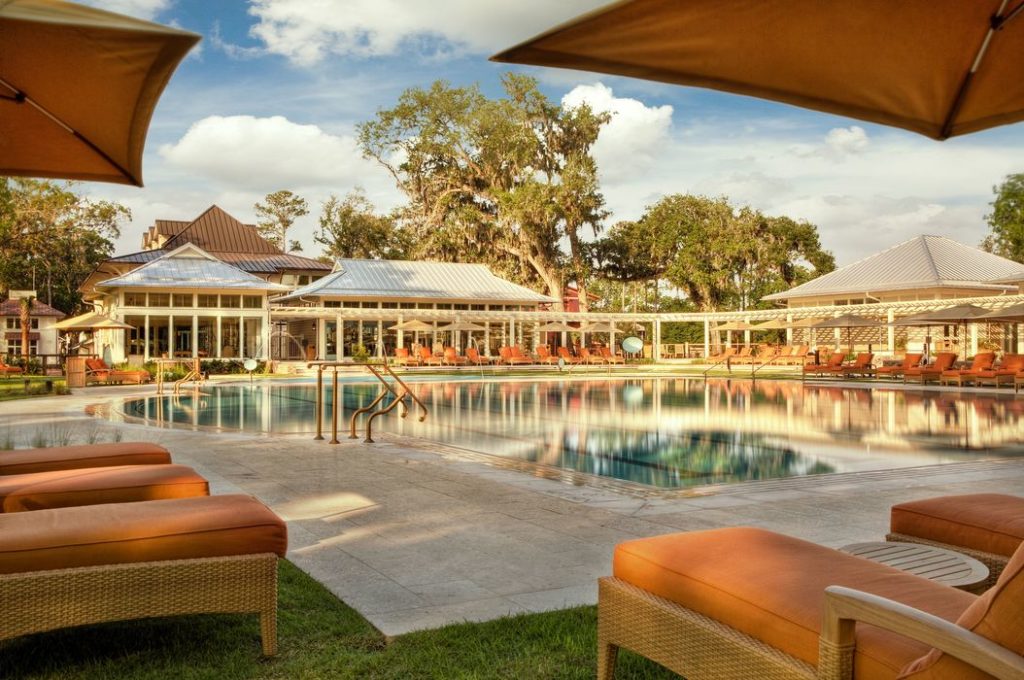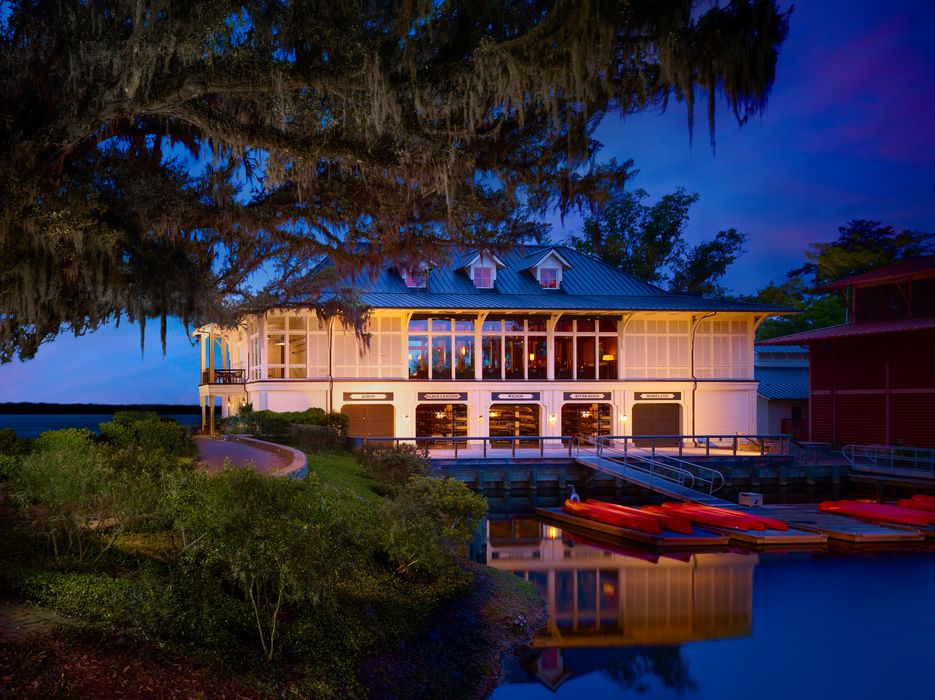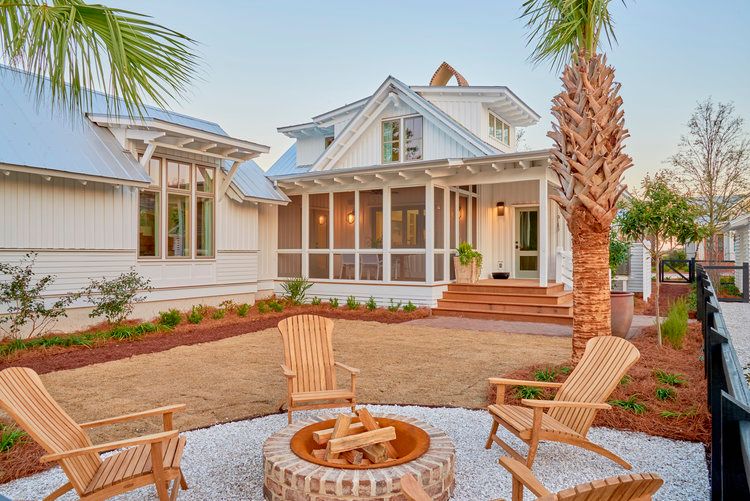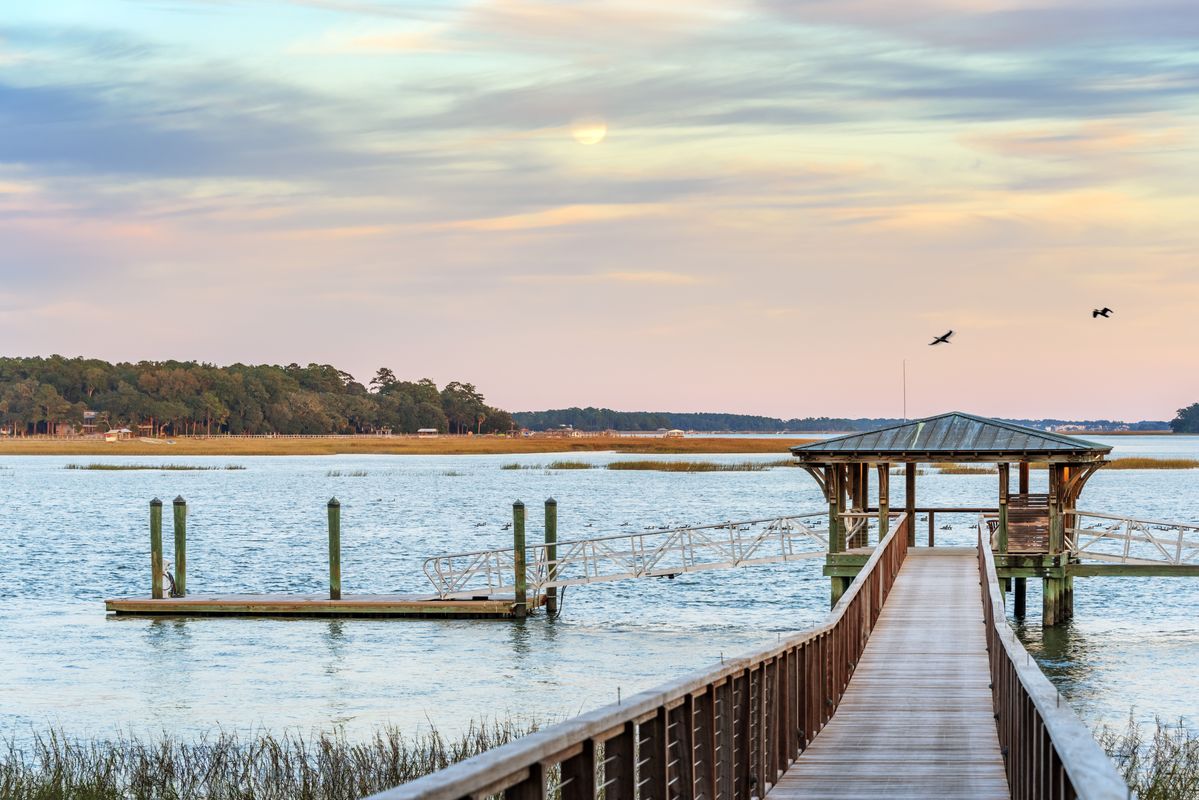Landscape drives lifestyle at Palmetto Bluff on South Carolina’s May River.
And for good reason: these 20,000 acres of Lowcountry make up the largest property east of the Mississippi without a major highway intersecting them. That adds up to one of the Southeast’s most desirable resort and residential communities.
For years, it was prized by Union Camp as a hunting preserve, until International Paper acquired the company—and the property.
By 2000, developers Jim Mozley, John Yelverton, and Bill Peacher had purchased it. Mozley, Yelverton, and Peacher worked for Crescent Communities and were a part of the original visioning team for the Palmetto Bluff we see today. They’d started out together in the early 1970s at nearby Sea Pines, creating the first master plan for Hilton Head. And they had big, land-sensitive ideas for Palmetto Bluff.
“The story is they sat down with the local real estate community and said: ‘Here’s what we want to do,” says Courtney Hampson, the development’s vice president of marketing. “They were told it wouldn’t work.”


The trio intuitively knew their property’s real value lay not just in building homes—but in taking care of the riverfront, forest, and wildlife that inhabited it. “Simply put, they wanted to create a community where the land comes first,” she says. “Their first step was to create a land conservancy, and set it up for success.”
To do that, they called on Jay Walea, who’d been hunting the property since he was 10. “My father was a big Union Camp man,” the 49-year-old says today. “I went from coming out for one day a year, then for three days and then six—through high school.”
In college, he worked at Palmetto Bluff, part-time. With a graduate degree in wildlife management, he started full-time. “I’ve been here 29 years—it’s the only job I’ve ever had,” he says. “It’s a blessing and a curse at the same time, but it’s an amazing place to come every day.”
Walea now heads up the six-person conservancy, a standalone, non-profit 501c3 charged with protecting the property and its wildlife. “My job is to make sure developers do right by the land,” he says. “I have the influence to change lines and layouts, and if a tree looks like it might come out, I can say: ‘It can’t.’”


He manages the habitat, sure, but he also reaches out to educate property owners. “We want to be sure they follow the laws of the Lowcountry in how they affect streams and neighborhoods,” he says.
Some of those 11 neighborhoods are more like villages, created with a New Urbanism mindset that concentrates development around public squares. Other neighborhoods are more estate-like and placed along the river or golf course.
But the villages are the beating heart of Palmetto Bluff. “The village of Wilson is where it started—the post office is there, along with Buffalo’s Restaurant, and the chapel—all around the town square,” says Stephanie Gentemann, director of the design review board.
Most of the initial planning came from Hart Howerton, a San Francisco firm, with Atlanta-based Historical Concepts designing the community buildings. “Wilson is tradition in its purest form,” Gentemann says.


The second village, Moreland, is more like modern rustic architecture. Designed by Austin’s Lake Flato, along with Denver’s 4240 Architecture, structures there emphasize the connections between indoors and out.
Gentemann’s design review board works to assure the landscape comes first when homes are built. It also enforces a Lowcountry vernacular, with raised foundations and porches connecting to neighbors. When a home addition is made, the board assures it maintains a human scale. And it insists upon authentic materials—wood siding, and roofs of metal, slate, or shakes.
A third village eventually will be built, with a total of 4,000 homes on site when all is said and done. “We’re now at 678, so we have a long way to go,” Gentemann says.


